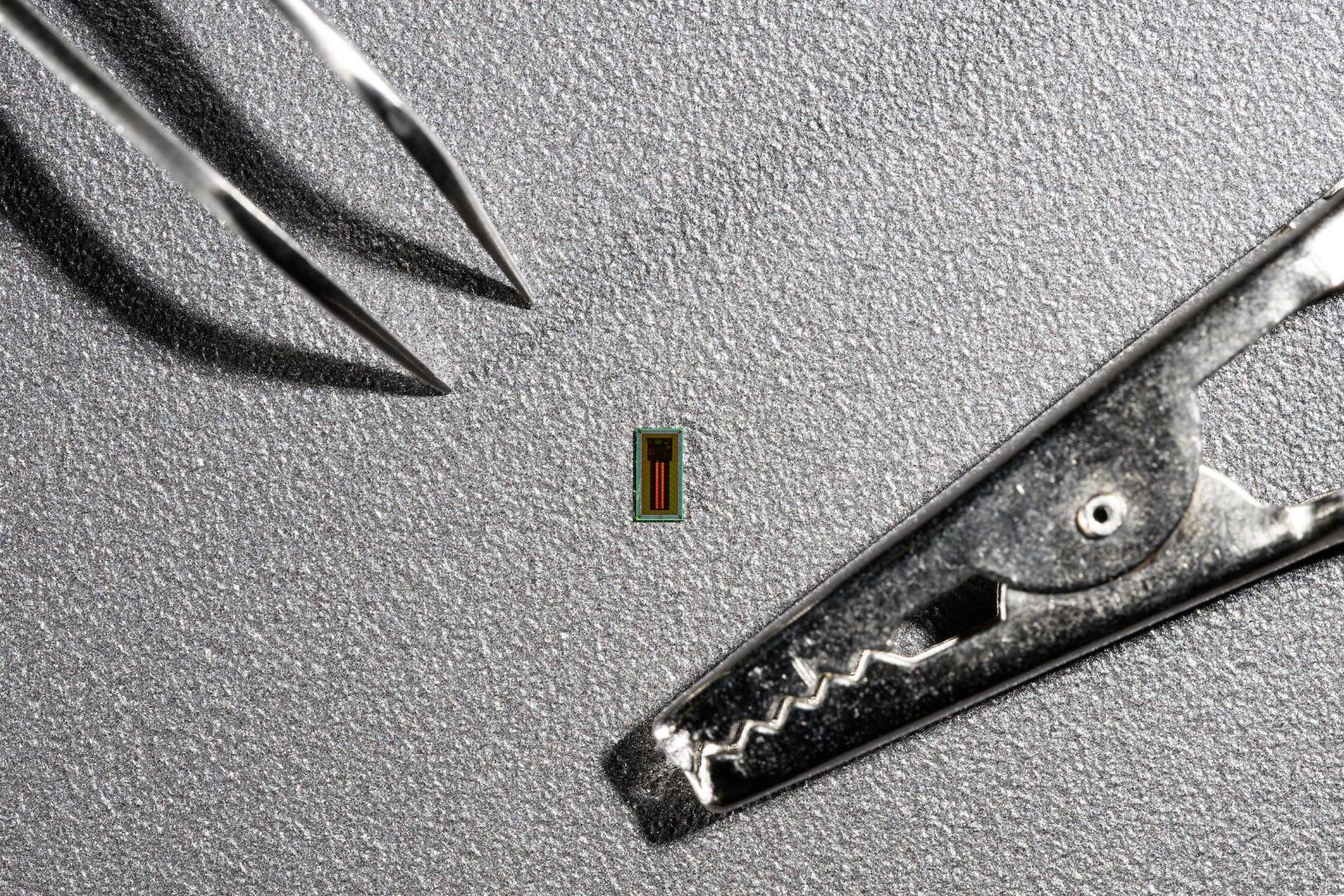Tiny 8mm brain chip turns thoughts into text with 91% accuracy

A new miniature brain-machine interface (BMI) has been designed to translate thoughts into words. The breakthrough could greatly benefit people with severe motor disorders by allowing them to communicate freely.
EPFL researchers have developed this high-performance miniaturized brain-machine interface (MiBMI) based on silicon chips.
This tiny chip is capable of decoding complex neural signals and converting them into readable text.
“MiBMI allows us to convert complex neural activity into readable text with high accuracy and low power consumption. This advance brings us closer to practical, implantable solutions that can significantly improve the communication abilities of people with severe motor disorders,” said Mahsa Shoaran of the Integrated Neurotechnologies Laboratory (INL) at EPFL’s IEM and Neuro X institutes.

How the new chip works
In recent years, research into the use and development of brain-machine interfaces has gained momentum.
These tiny devices could potentially help people with severe motor disabilities communicate and interact with the world around them.
Elon Musk’s company Neuralink is actively advancing the development of BMIs. Its goal is to create BMIs that can help people with neurological disorders such as paralysis or spinal cord injuries.
Compared to other IMCs, this new MiBMI is compact, efficient and versatile. Traditional systems are often bulky, energy-hungry and have limited use.
To achieve brain-to-text conversion, the neural signals produced when a person considers writing are decoded. Electrodes implanted in the brain capture neural activity associated with these imagined hand movements.
The MiBMI chipset instantly processes recorded neural signals, transforming the brain’s predicted hand movements into digital text.
This device will facilitate communication for people suffering from serious motor disorders, particularly locked-in syndrome.
“Although the chip has not yet been integrated into a working BMI, it has processed data from previous live recordings, such as those from the Shenoy lab at Stanford, converting handwriting activity to text with an impressive 91% accuracy,” said Mohammed Ali Shaeri, the lead author.
With its current ability to decode 31 characters, the chip demonstrates immense potential for future advancements.
“We are confident that we can decode up to 100 characters, but a handwriting dataset with more characters is not yet available,” Shaeri added.
The chip is minimally invasive
The MiBMI’s compact size, low power consumption and minimally invasive nature make it ideal for implantation.
As a fully integrated system, MiBMI performs recording and processing on two tiny chips, totaling just 8 mm2.
“Its minimally invasive nature ensures the safety and practicality of its use in clinical and real-world settings,” the press release states.
The revolutionary design of the MiBMI chip is revolutionizing the brain-machine interfaces of the future, making practical, fully implantable devices a reality.
This has the potential to significantly improve the quality of life of patients with amyotrophic lateral sclerosis (ALS) and spinal cord injuries, allowing them to communicate without the need for physical movement.
“Our goal is to develop a versatile IMC that can be tailored to various neurological disorders, thereby providing a broader range of solutions to patients,” Shoaran added.
The team presented the development at the International Conference on Solid State Circuits.
The results were reported in the IEEE Journal of Solid State Circuits.
ABOUT THE PUBLISHER
Mrigakshi Dixit Mrigakshi is a science journalist who loves writing about space exploration, biology, and technological innovations. Her work has been featured in renowned publications including Nature India, Supercluster, The Weather Channel, and Astronomy magazine. If you have any ideas in mind, feel free to drop her an email.





